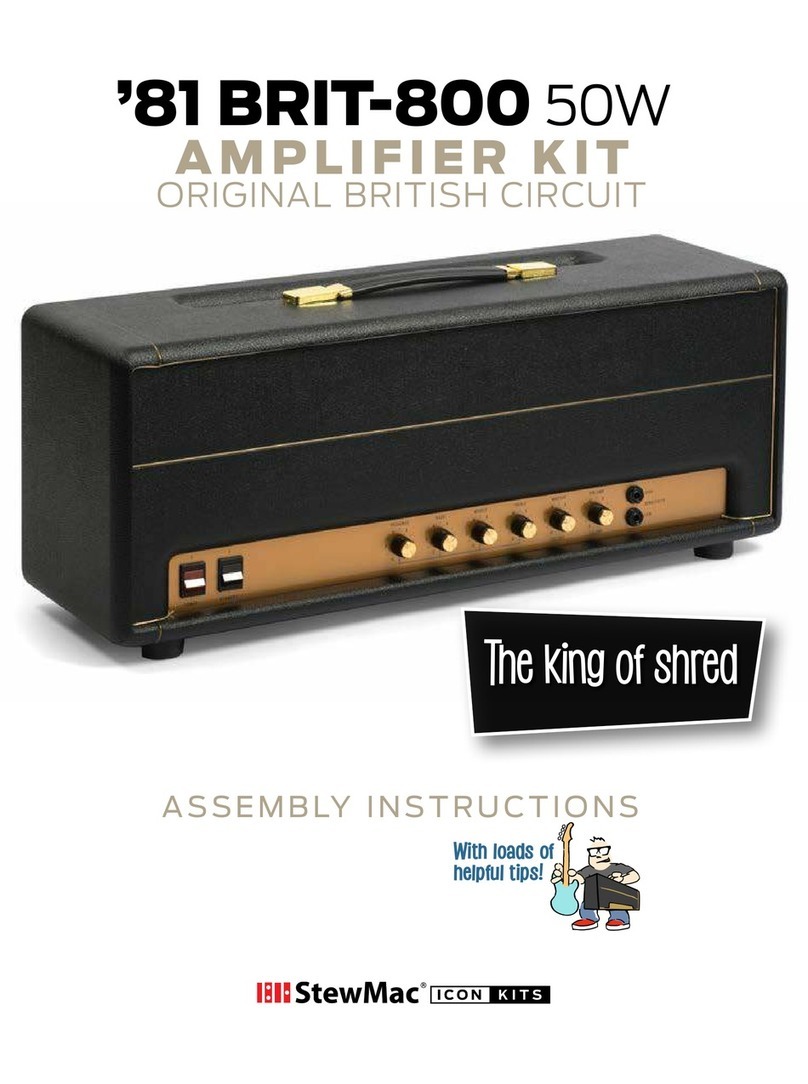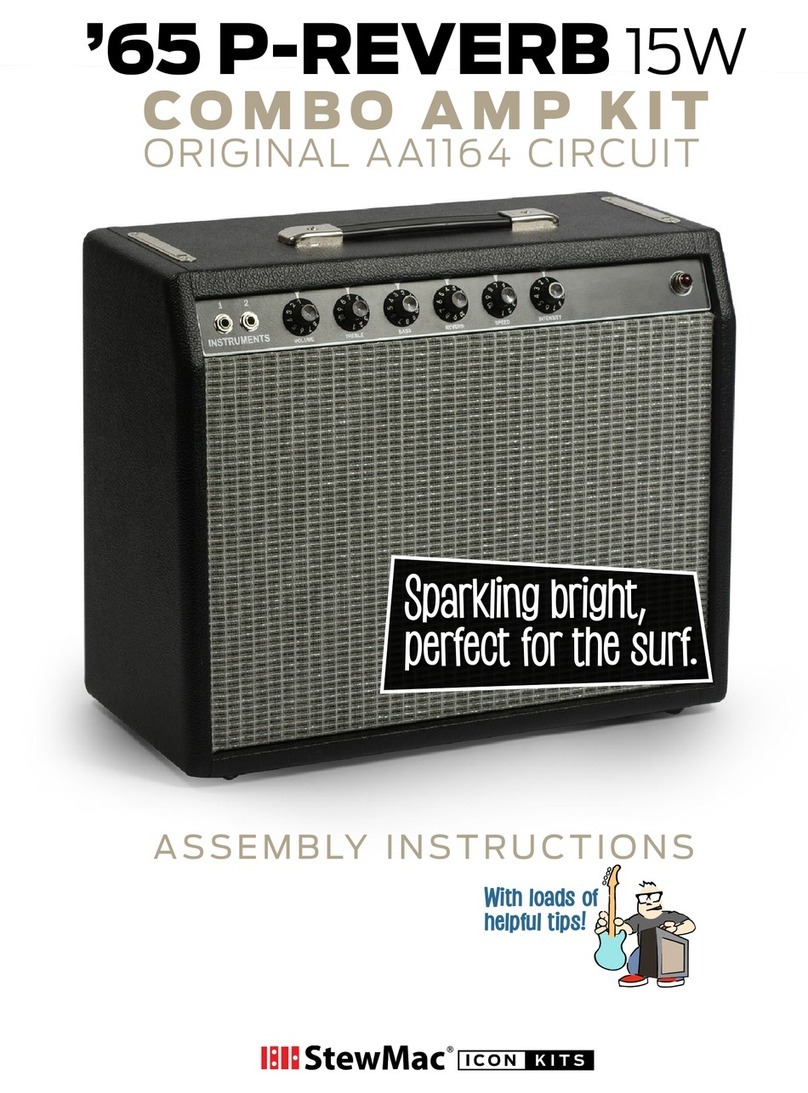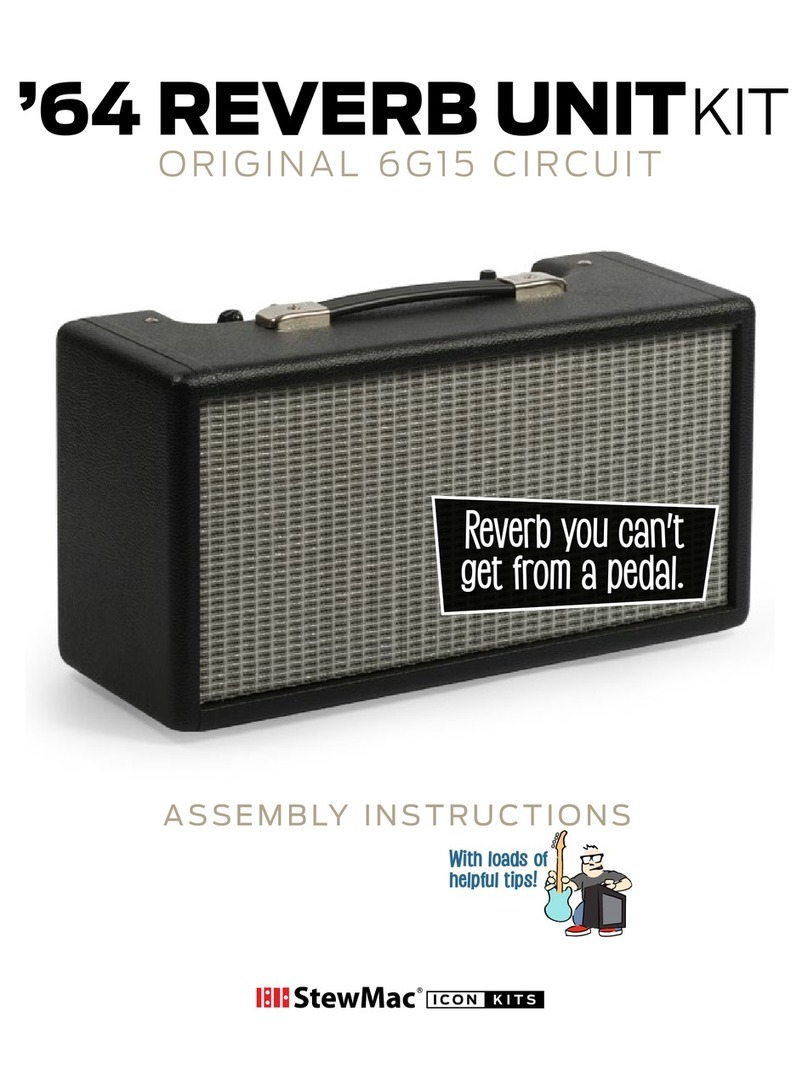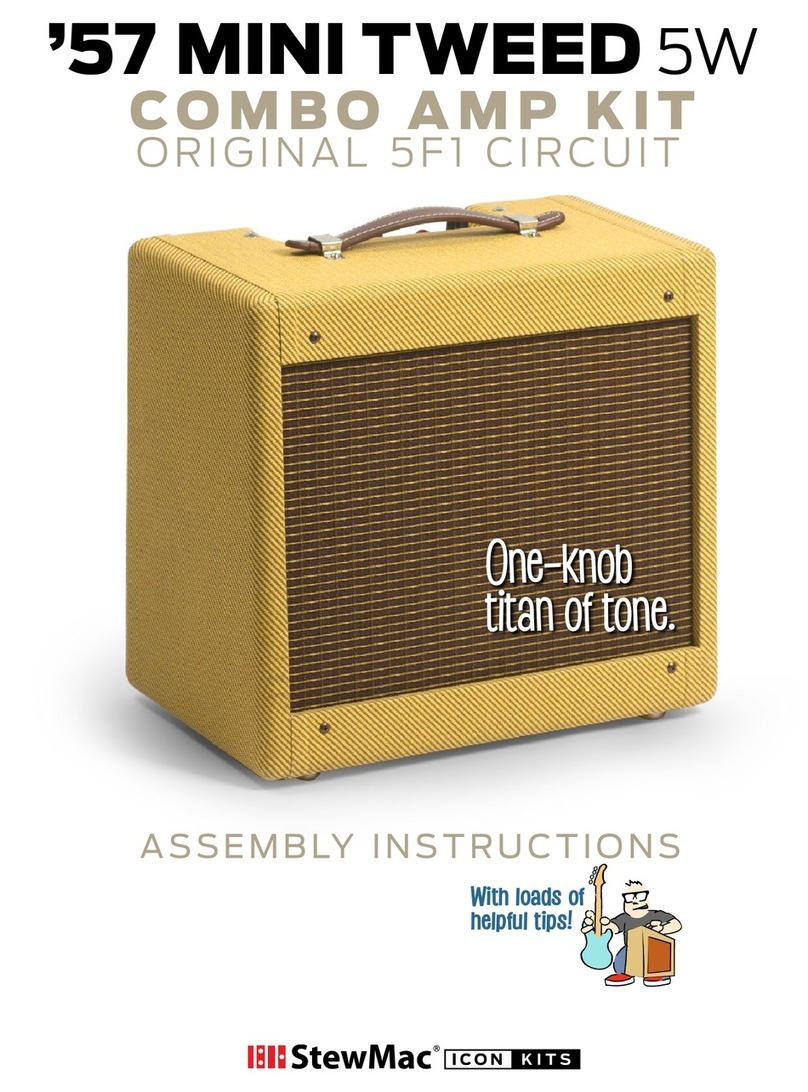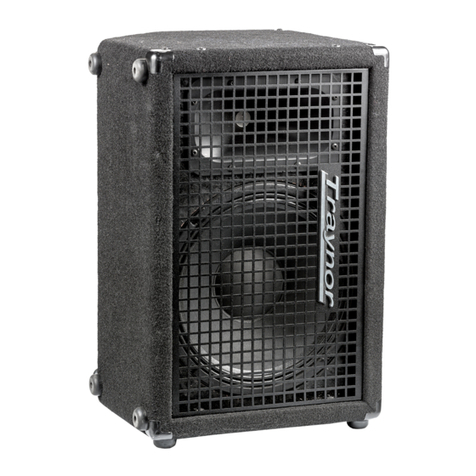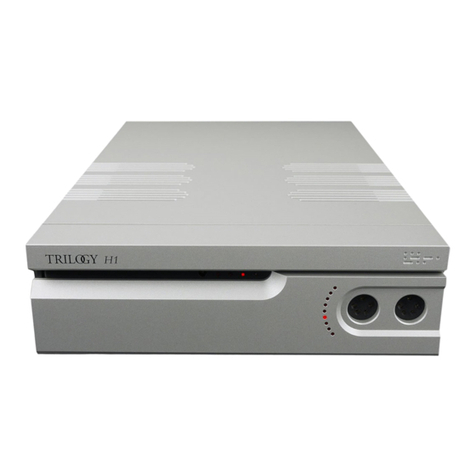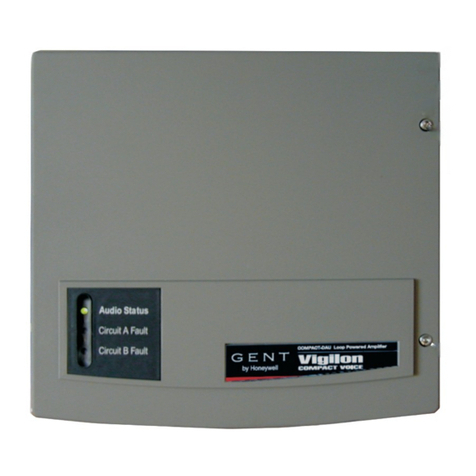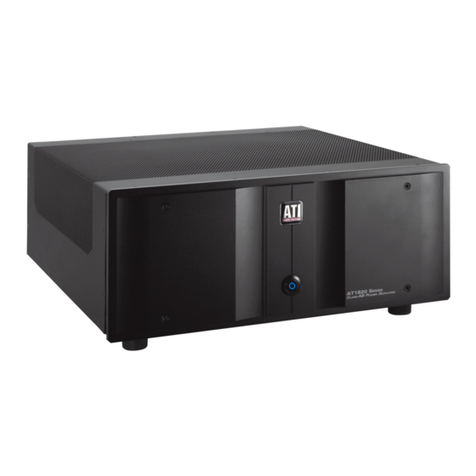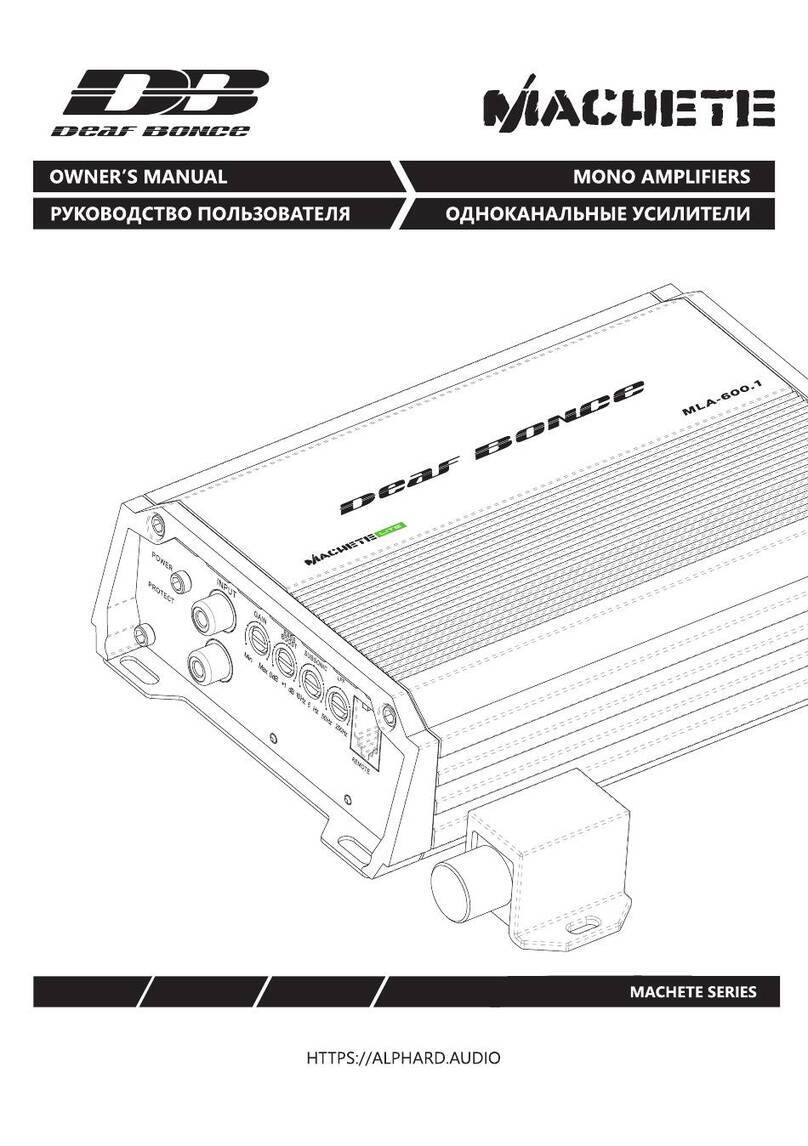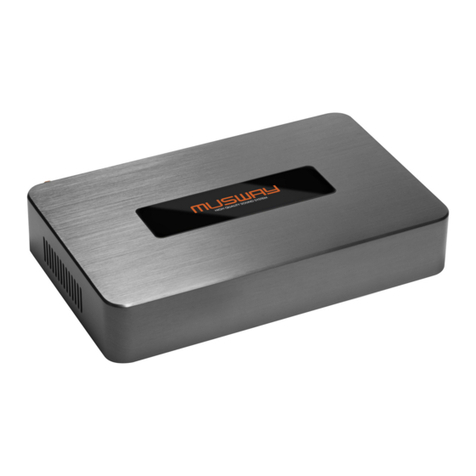StewMac 66 D-REVERB User manual

ASSEMBLY INSTRUCTIONS
With loads of
helpful tips!
Famously clean with
enough guts to gig!
’66 D-REVERB 22W
COMBO AMP KIT
ORIGINAL AB763 CIRCUIT

stewmac.com 2 © 2019 StewMac
Contents
About this iconic amp ............................................ 1
...................................................
2
Parts list ........................................................... 3
Tools and supplies ................................................ 5
Amp voltages are seriously dangerous! .......................... 6
How to use a snuffer stick ........................................ 6
How to read resistor values ...................................... 7
Capacitor values .................................................. 7
Prepping the cabinet ............................................. 8
Prepping the eyelet boards ..................................... 10
Tips for great soldering ..........................................11
Installing the chassis-mounted components ................... 13
How to install parts on an eyelet board in three steps .......... 22
Wrapping parts onto the bias board ............................ 23
Wrapping parts onto the filter cap board ....................... 25
Wrapping parts onto the main eyelet board .................... 27
Installing parts and preparing for testing ...................... 52
Testing and troubleshooting .................................... 53
Final assembly ................................................... 56
Tips for using the 66D ........................................... 57
Learning more: secrets revealed in the schematic .............. 58
Circuit schematic ................................................ 59
More iconic amp kits from StewMac . . . . . . . . . . . . . . . . . . . . . . . . . . . . . 60
Complete wiring diagram ....................................... 62
Tube replacement chart ......................................... 63
COPYRIGHT WARNING
This material is protected by copyright and has been created by and solely for the purposes of StewMac.
You may not sell, alter or further reproduce any part of this material, or distribute it to any other per-
son. Where provided to you in electronic format, you may only print from it for your own private use.
Failure to comply with the terms of this warning exposes you to legal action for copyright infringement.
How to build this kit!

stewmac.com 1 © 2019 StewMac
’66 D-REVERB 22W
COMBO AMP KIT ORIGINAL AB763 CIRCUIT
For many players, this is
the #1 desert island amp!
Be excited!
Your new StewMac ’66 D-Reverb will be a blast
to play through and even more fun to build.
Perfect for recording as well as performing,
the D-Reverb produces stinging clarity that
absolutely refuses to get lost in the mix.
This amp is an ICON
One of the most popular designs ever, this amp lives in the happy middle
between bright clarity and rich distortion. It excels in the studio and on
the stage. While capable of crystal clear tones at good volume, you can
push this one into beautifully saturated, play-sensitive distortion.
It’s all here: clarity, distortion, and rectier tube sag.
StewMac ICON KITS bring classics that are no longer made, or are simply
unaordable, within reach. And the best part is you get to build them
with your own hands.
We give painstaking attention to parts selection, authentic materials, and
instantly recognizable details—everything that makes the originals so
sought after.
Build it with StewMac
These immersive instructions walk you through every step of creating your
’66 D-Reverb. And you’ll learn a lot, gaining a deep knowledge of your
amp’s inner workings.
Follow our steps closely for safety, too: we’ve carefully laid out a path that
even newcomers can follow in handling electrical components.
Building an amp can seem daunting, but nobody makes it easier than
StewMac. Watch for helpful tips along the way, too—we’re here to help!
Let’s get building!

stewmac.com 2 © 2019 StewMac
Here’s how to build this amp!
Wiring goes like this:
1. First, you’ll wrap the leads, connecting them without solder.
2. Then double-check all the connections. Don’t rush!
3. When everything checks out, it's time to solder.
The numbered steps tell you when.
Get the cabinet ready,
starting at Step
1
on page
8
.
You’ll prep the metal chassis
and the eyelet board too.
Learn more:
You don’t need to read the schematic, but it’s fun!
See how your guitar’s signal gets processed into sound
on page 59.
Sort your components by type, using the parts list.
Quick look:
See page
11
#10733 © 2018 StewMac
GroundJackTransformer Preamp tube
plate
grid
cathode
Power tube
grid
plate
cathode
screen
Capacitor
Electrolytic Cap.
Diode
Resistor Potentiometers Rectifier tube Optoisolater
plate cathode
filament
plate
Shielded
cable ’66 D-REVERB 22W
ORIGINAL AB763 CIRCUIT
Gain Gain
Processing
Processing
Processing
Output
Power
Negative Feedback
68K
25μF 50V
25μF 50V
25μF 50V
1.5K
6.8K
68K
B
B D
2
2
6
+180V
6
+180V
+1.3V 8
+1.3V 8
8
+1.3V
+200V
1
+77V
250pF
10pF
.1pF
.01μF
.047μF
.022μF
.0033μF
.01μF
AE
C
BC
VIBRATO
PEDAL
REVERB
PEDAL
REVERB UNIT
Output
Input
.1μF .01μF
.1μF
.1μF
SOCKETV1
7025 SOCKETV4
7025
NORMAL
SOCKETV3
12AT7
SOCKETV9
GZ34
SOCKETV5
12AX7
SOCKETV6
12AT7
SOCKETV7
6V6GT
SOCKETV8
6V6GT
.1μF
500pF
.047μF
1
100K
100K
100K
100Ω
100Ω
82K
220K220K
220K
47Ω
1M1M
100K
3.3M
220K
22K
1.5K
470Ω
820Ω
470Ω
470Ω
1.5K
10K10K
100K
220K
100K
100K
100K
100K
100K
470K
220K
2.2M
220K
10M
10K
470Ω
250KA
TREBLE
1MA
VOLUME
250KA
BASS
3MRA
SPEED
50KRA
INTENSITY
68K
25μF 50V
1.5K
25μF 50V
820Ω
6.8K
68K
1
M
1
M
2
2
+170V 1
+180V 1
3 +1.3V
3 +1.3V
+170V
6
+180V
6
250pF 47pF
A
.1μF
SOCKETV2
7025
VIBRATO
.047μF
1
100K
250KA
TREBLE
100KL
REVERB
1MA
VOLUME
250KA
BASS
7EXTENSION
SPEAKER
TR3
TR2
STANDBY
SWITCH
TR4
TR1
TR1: 125P33A
125P23B
TR2: 125C3A
TR3: 125A1A
TR4: 125A20B
8
8
5
68
42
3 +1.2V
+170V
1
1
22
+410V
6
8+8.7V
3+370V
3+415V
-35V
+415V
2.2K
1M
330VAC
AC switch
1 amp
slow-blow fuse Totube heaters
and pilot light
330VAC
820Ω
25μF 50V
16μF 450V
16μF 450V
25μF 50V
27K
25μF 50V
100AK
.02μF
16μF
450V
16μF
450V
D16μF
450V
1M
1M10KL
21
3
6
7
8
7
7
2
8
5
4 +365V
4 +415V
OutputGain Processing

stewmac.com 3 © 2019 StewMac
Resistors
r (1) 47Ω .5W carbon composite
r (2) 100Ω .5W carbon composite
r (1) 470Ω .5W carbon composite
r (3) 820Ω .5W carbon composite
r (4) 1.5K .5W carbon composite
r (1) 2.2K .5W carbon composite
r (1) 2.7K .5W carbon composite
r (2) 6.8K .5W carbon composite
r (1) 10K .5W carbon composite
r (1) 22K .5W carbon composite
r (1) 27K .5W carbon composite
r (1) 56K .5W carbon composite
r (4) 68K .5W carbon composite
r (1) 82K .5W carbon composite
r (12)100K .5W carbon composite
r (8) 220K .5W carbon composite
r (1) 470K .5W carbon composite
r (7) 1M .5W carbon composite
r (1) 2.2M .5W carbon composite
r (1) 3.3M .5W carbon composite
r (3) 470Ω 1W carbon film
r (1) 10M 1W carbon film
r (2) 10K 2W metal oxide
Yellow Violet Black Gold
Brown Black Brown Gold
Yellow Violet Brown Gold
Brown Green Red Gold
Gray Red Brown Gold
Red Red Red Gold
Red Violet Orange Gold
Red Violet Red Gold
Blue Gray Red Gold
Red Red Green Gold
Orange Orange Green Gold
Red Red Orange Gold
Green Blue Orange Gold
Blue Gray Orange Gold
Gray Red Orange Gold
Brown Black Yellow Gold
Brown Black Orange Gold
Red Red Yellow Gold
Yellow Violet Yellow Gold
Brown Black Green Gold
Yellow Violet Brown Gold
Brown Black Blue Gold
Brown Black Orange Gold
Capacitors
r (1) 47pF 500V silver mica
r (2) 250pF 500V silver mica
r (1) 500pF 500V silver mica
r (1) 10pF 500V ceramic disk
r (2) .01μF 500V ceramic disk
r (1) .02μF 500V ceramic disk
r (1) .001μF 600V Orange Drop
r (1) .0033μF 600V Orange Drop
r (1) .022μF 600V Orange Drop
r (4) .047μF 600V Orange Drop
r (6) .1μF 600V Orange Drop
r (5) 16μF 500V electrolytic
r (8) 25μF 50V sprague atom
Diode, optoisolator
r (1) 1N4007 1000V rectifier diode
r (1) Optoisolator
250
102J 1119
+
25µF
510+47
332J 600V
223J 600V
473J 600V
104J 600V
16μF
103K 203Z
r (1) Cabinet
r (1) Chassis
r (1) Capacitor pan
r (3) Eyelet boards
r (3) Insulator boards
r (1) Faceplate/backplate set
r (1) 12” speaker
Hardware
r (6) 8-32 machine screw, 3/8"
r (10) 8-32 locknut
r (4) 6-32 machine screw, 1/2"
r (4) 6-32 locknut
r (6) 4-40 machine screw, 3/8"
r (20) 4-40 machine screw, 1/4"
r (26) 4-40 locknut
r (4) Self-tapping screw
r (1) Black wood screw
r (1) Power cord clamp
r (1) Strain relief for power cord
r (6) Rubber grommet
r (2) Chassis mounting strap
r (4) Chassis strap screw and nut
Parts list

stewmac.com 4 © 2019 StewMac
12AX7 12AT7 6V6 5AR4
4
3
2
1
8
7
6
5
6
4
3
2
1
9
8
7
5
Tubes, lamps, fuses, and sockets
r (4) RCA-style jack
r (1) Two-lug jack
r (5) Three-lug jack
r (6) Nine-pin tube socket
r (6) Shield for nine-pin tube socket
r (3) Eight-pin tube socket
r (3) Tension clip for eight-pin socket
r (4) 12AX7 preamp tube (also called ECC83S)
r (2) 12AT7 preamp tube (also called ECC81)
r (2) 6V6S power tube
r (1) 5AR4 rectifier tube (also called GZ34)
r (1) Fuse socket
r (1) Fuse (1 amp, slow blow)
r (1) Pilot lamp socket with lens
r (1) Pilot lamp bulb (#47)
Control pots and more
r (1) 10KL bias pot
r (1) 100KL control pot
r (4) 250KA control pot
r (2) 1MA control pot
r (1) 3MRA control pot
r (1) 50KRA control pot
r (9) Knob
r (2) Three-lug grounding strip
r (2) Power switch (2 lugs)
r (1) Ground switch (3 lugs)
r (1) Power cord
r (1) Speaker plug
Transformers
r (1) Power transformer
r (1) Output transformer
r (1) Reverb driver
r (1) Filter choke
Reverb
r (1) Reverb tank
r (1) Reverb tank bag
r (1) Reverb wiring kit
r (1) Footswitch
1
0
0
K
L
2
5
0
K
A
1
M
A
3
M
R
A
5
0
K
R
A
1
2
3
4
10
5
6
7
8
9
1
0
K
L
Wire
r(1) Heater wires (pre-tinned)
r(1) Speaker wires (multi-strand)
r(1) Yellow push-back wire
r(1) Green push-back wire
Heat-shrink tubing
r (2) 1/8" diameter
Vintage-style push-back wire lets you push
the insulation back instead of trimming it.
BUT: Trimming it still works better!
Parts list

stewmac.com 5 © 2019 StewMac
#0531
StewMac
Solder Monster
#3000
Guitar Tech
Screwdriver Set
#1606
Wire Stripper
#1607
Wire Cutter
#0501
Solomon SL-30
Soldering Station
#1609
Round Nose
Bending Pliers #0505
Kester
Pocket-Pak
Solder
StewMac’s Solder Monster
holds parts while you solder
Tools and supplies
Required Phillips screwdrivers, #1 and #2
Item #3000 Guitar Tech Screwdriver Set
Needle nose pliers
Item #1610 Long Nose Pliers
Wire cutter
Item #1607 Wire Cutter
Wire stripper
Item #1606 Wire Stripper
Soldering iron (preferably 40W)
Item #0501 Solomon SL-30 Soldering Station
Solder (at least one Pocket-Pak)
Item #0505 Kester Pocket-Pak Solder
Solder sucker
Item #0503 Solomon Solder Sucker
Drill with a 5/32", 5/64", and 1/4" bit
For mounting eyelet board and lter cap
Ruler
Item #4905 StewMac Shop Rule
Digital multimeter
Item #3618 Fieldpiece Pocket Multimeter
Snuer stick (bleed resistor)
Item #1552 Snuer Stick
Pencil
Wooden chopsticks
Glue
Wood glue, white glue, or
contact cement for gluing a
paper label inside the cabinet
Butane lighter or matches
For heating heat-shrink tubing
Helpful Round nose bending pliers
Item #1609 Round Nose Bending Pliers
Solder wick
Item #0504 Solder Wick, 5-foot roll
Soldering aids
Item #0521 StewMac Soldering Aids
Soldering stand
Item #0506 Solomon Soldering Stand
Solder Monster, or helping hand tool
Item #0531 StewMac Solder Monster
Chassis stand
Item #10750 Chassis Stand
Printed circuit board vise
Scratch awl or center punch
Item #3000 Guitar Tech Screwdriver Set
Tray for loose parts
Bias meter for accurate biasing
Item #1580 VHT Tube Tester
+ Amp Bias Meter

stewmac.com 6 © 2019 StewMac
High voltage, even when unplugged
When you turn on an amp, the capacitors are designed to
take on a charge and hold it. That stored voltage is enough
to injure you seriously, or even kill you.
These components aren’t a threat until the rst time you plug
the amp in. The stored electricity can be safely discharged to
ground with a snuer stick. See how to use it below.
Once your amp has been turned on, don’t touch the wiring
with your bare hands—even after turning it o. If you need
to press on a contact, use a chopstick or Sharpie marker,
which are both non-conductive. Don’t use a pencil, because
graphite is conductive.
It’s important that you understand the dangers so you’re
working safely. Here’s how to do it right.
Wear rubber-soled shoes
Rubber soles increase the insulation
between yourself and the ground.
Take off your ring
A metal ring on your finger can
bridge a hot connection to ground.
Wear safety glasses
Rosin-core solder sometimes bubbles up, and it can spew
molten specks into the air. You don’t want molten solder in
your eyes.
It’s better not to work alone
Electrical shocks can incapacitate you, and having someone
available to call 911 can be a lifesaver.
How to use a snuffer stick
To discharge a capacitor, clip the snuer stick lead
to ground—preferably a mounting bolt on the
power transformer. Hold the tip of the stick to the
cap’s positive lead and use your multimeter to
watch the voltage drain to less than 18V.
Take breaks and stop when you’re tired
Fatigue leads to mistakes, and no one can aord mistakes
when working with electricity.
Stay suspicious
Whether it’s the rst time you’ve been inside a live ampli-
er or the 100th time, don’t become complacent. If you
discharge the caps and walk away for a few minutes, check
again for residual voltage when you return. Capacitors can
self-charge through a phenomenon known as dielectric
memory.
Check before powering on
It’s easy to forget that you a left a stray tool or wire in the
chassis. It’s also easy to forget to re-attach the speaker wire,
and that can fry an output transformer in seconds. Constant
vigilance is your friend when working on amps.
Always unplug it
Unplug the amp whenever you don’t specically need it
plugged in. Some points are always hot when the amp’s
plugged in, even if the power switch is o. These points
include the lugs on the fuse socket, power switch, and
standby switch.
Amp voltages are seriously dangerous!
Professionals
who work on
amps take these
safety habits
very seriously

stewmac.com 7 © 2019 StewMac
A resistor’s value—the amount of resistance it creates—is
rated in ohms (Ω ). Larger ohm values mean more resistance.
For example, a 100Ω resistor creates ten times as much re-
sistance as a 10Ω resistor.
The resistors used in ampliers are too small to have value
numbers printed on them. Instead, a system of colored
bands tells their values. The key to reading these bands is
provided below. However, an easier way to decode these
bands is to download one of the many smartphone apps
for this purpose.
One band will be the nearest to an end of the resistor. That
band tells the rst value. Combine it with the value of band
2 to get a two-digit number (68 in our example below).
Multiply that number by band 3 (68 x 1,000 = 68,000). Thou-
sands are represented by the letter K, so this resistor is 68K
(kilo-ohms, or KΩ).
If there is a fourth band, it will be either silver or gold. This
indicates the tolerance allowed during manufacturing. The
resistors used in this kit have a +/- 5% tolerance, represented
by a gold band 4.
A magnifying glass helps a lot. The bands on a 470Ω resistor
are yellow/violet/brown, and the bands on a 47K resistor are
yellow/violet/orange. They’re easily confused!
Can’t read the colors?
You can always use a multimeter to test a resistor’s value.
Set your meter to ohms and connect the test leads on each
side of the resistor.
Capacitor values are typically printed on the component.
The key values with caps are their capacitance and voltage.
Think of a capacitor as a container that can hold electricity.
Capacitance, measured in farads, refers to how much elec-
tricity this container can hold—its capacity. One farad (1F)
would be much too large for use in an amplier. Caps for
amps are rated in millionths of a farad, called microfarads
(μF), or trillionths of a farad: picofarads (pF). The voltage
spec for a cap refers to how much DC voltage it can handle
at any given time.
A unique property of capacitors is that they don’t allow DC
current to ow past them, only AC current. This is important
in parts of an amplier circuit, such as the path between a
preamp stage and a power amp stage. Here, a “coupling
capacitor" will block DC voltage, allowing only the AC guitar
signal to pass.
Filter caps
Capacitors also lter out 60Hz hum, or “ripple," after the AC
current from the wall is converted to DC. These capacitors
are called lter caps, because they lter out the ripple from
a power supply. The lter caps in this amp are the 16μF
electrolytic capacitors.
Electrolytic caps
Electrolytic capacitors contain electrolyte: a liquid or gel
that gives them a large storage capacity. Electrolytic caps
are typically polarized.
Polarized caps
Some capacitors have polarity and some don’t. It’s extremely
important to install polarized caps correctly in a circuit. The
positive lead of an electrolytic cap will be indicated by an
indented ring around one edge of the capacitor. The nega-
tive lead will often be indicated by a band of arrows pointing
to the negative lead.
Installing capacitors with the polarity backwards will make
the circuit malfunction and quickly destroy the capacitor—
even causing it to explode.
Band 1 Band 2 Band 3 Band 4
1st Digit 2nd Digit Multiplier Tolerance
6 8 x1,000 +/- 5%
68K +/- 5%
K=1,000
Blue
Read this band first (closest to an end)
Gray Orange Gold
BLACK 0 0 1 None +/- 20%
BROWN 1 1 10
RED 2 2 100
ORANGE 3 3 1,000
YELLOW 4 4 10,000
GREEN 5 5 100,000
BLUE 6 6 1,000,000
VIOLET 7 7
GRAY 8 8 0.01 +/- 10% SILVER
WHITE 9 9 0.1 +/- 5% GOLD
NegativePositive
+
25μF
16μf
How to read resistor values Capacitor values

stewmac.com 8 © 2019 StewMac
STEP 2
Solder the speaker plug
Use a small screwdriver to remove the
back panel of the speaker plug.
On the black and white speaker leads,
push the insulation back 3/8". Solder
the white positive lead to the tip lug
(center of the plug).
Trim the black lead and solder it to the
sleeve lug. The solder joints need to
be neat so they won’t short against
the metal case. See "Tips for great
soldering" on page 11.
Reassemble the plug and do a
continuity test with your multimeter
to make sure there’s no connection
between the plug’s tip and its metal
case (see page 53).
Remove the cabinet’s two back panels
to prepare for installing the speaker.
STEP 1
Mount the power cord clamp
Drill a 5/64" pilot hole to mount the
power cord clamp. Locate the clamp
inside the left wall
of the cabinet, 1”
from the back
panel ledge, 8”
from the bottom.
Don’t drill through the cabinet! Use a
piece of masking tape on your drill bit
to mark the depth, or use a StewMac
Depth-stop Drill Bit (item #1712).
Use the black wood screw to mount
the power cord clamp. You’ll secure
the power cord with this clamp later,
after the testing.
Start by prepping the cabinet
STEP 3
Solder the speaker leads
Twist the speaker leads together to
keep them neat.
Push the insulation back 3/8" and
insert the white lead into the speaker’s
positive terminal and the black lead
through the negative terminal.
Before soldering these leads, place
a business card or other protection
under the terminals to prevent solder
dripping onto the speaker cone.
Solder the two leads to the speaker
terminals.
Check off each
completed step
Back
Here

stewmac.com 9 © 2019 StewMac
STEP 5
Install faceplate + backplate
Secure the faceplate by putting
the normal channel volume and
bass control pots in their holes and
sliding the faceplate over them. Install
washers and nuts on the pots to hold
the plate in place.
Use the 1MA pot for volume and a
250KA pot for bass. Install them with
their lugs facing up for soldering. See
the wiring diagram on Page 12.
Install the backplate the same way,
using the two-lug extension speaker
jack and the three-lug ground switch.
This switch is just for looks, because
ground switches are not needed
in modern amps with three-wire
grounding power cords. But having
it there keeps the vintage 1960s look.
Mount the ground switch so it toggles
left/right rather than up/down.
STEP 6
Glue the tube placement chart
Cut out the tube replacement chart
on page 63. Put a thin coat of glue or
contact cement on the back and glue
it to the inside wall of the cabinet.
STEP 7
Reverb wiring kit
The shielded wire is in two 3-foot
lengths. At the ends of each piece, pull
3/4" of the wire mesh shielding away
to one side and strip away 3/8" of the
internal cloth shielding. Insert the
exposed wire into an RCA plug so that
it reaches the tip of the center post.
Solder this lead in place at the tip of
the plug. Don’t leave solder on the
outside of the plug tip, which would
keep it from tting into the jack. See
“Tips for great soldering” on page 11.
After the plug tip cools and the inside
solder joint is set, solder the braided
wire shielding onto the outside of the
plug. Solder the four RCA plugs this
way, on each end of the two cables.
These two cables will connect the
reverb tank.
Test for continuity between the tips
of the plugs on each cable, then test
for continuity between the shields of
the plugs in the same way.
Also test to make sure you don’t have
continuity between the tip and the
shield of each plug, which would
indicate a short in the cable. If your
multimeter nds unwanted continu-
ity, the likely culprit is the inside (tip)
wire shorting to the outer shield. If
that happens, de-solder the tip con-
nection and redo that solder joint.
STEP 4
Install the speaker
Remove the nuts from the four
speaker-mounting screws. Carefully
slide the speaker onto the mounting
screws until it’s ush with the front
panel.
Install the four speaker-mounting
nuts so they’re lightly touching the
speaker frame.
Do not tighten the nuts in a circular
pattern around the speaker, because
this can warp the speaker frame.
Instead tighten one nut with a quarter
turn so it’s just snug, then do the same
to the opposite side. Then snug the
third nut and fourth. Repeat this criss-
cross pattern of quarter-turns until all
four nuts have had one full turn. This
will give proper tension to compress
the speaker gasket. Overtightening
can warp the frame, damage the cone,
and cause unwanted distortion.
Criss-cross
tightening
prevents warping.
’66 D-Reverb 22W
ORIGINAL AB763 CIRCUIT
StewMac®
ICON KITS
Use only 1-amp slow-blow fuse, size 5mm x 20mm.
DANGER: Unplug the amp before changing tubes.
Tube locations from left to right:
12AX7
(ECC83)
12AX7
(ECC83)
V5 V4
6V6 12AT7
(ECC81)
V7 V6
12AX7
(ECC83)
12AX7
(ECC83)
V2 V1
12AT7
(ECC81)
V3
5AR4
(GZ34)
6V6
V9 V8
#10737

stewmac.com 10 © 2019 StewMac
Prepping the eyelet boards
This circuit is built on three eyelet
boards: the large main eyelet board,
the middle-sized lter cap board, and
the small bias board. Gather those
three boards now.
STEP 8
Number the eyelets and holes
In these instructions, we’ll refer to the
eyelets and holes on the main eyelet
board by number. On the bias board
and lter cap board, we’ll use letters.
Orient the boards as shown below
and use a pencil to add the numbers
and letters.
L
S
K
R
Q
J
P
I
O
H
M
G
N
38
28
12345678
51 52
10
34
54
68
58
43
49
50
32
31
61
44
35
36
60
63
62
45
36
11
55
41
12 14 15
56
42
16 19 21 23 26
29
46
64
39
47 48
30
65 66 67
53
9
69 70
71
72
59
57
73 74
40
13 20 22 27
18
17 25
24
83 85 86 87 90 91 92 94 97
96
95
93 98
37
88 89 99
76 77 78 81 82
79 80
33
84
75
ABC
D
F
E
Main
Bias
Filter cap
STEP 10
Drill the filter cap boards
Drill 1/4" holes in the two upper cor-
ners of the taped-together lter cap
board and insulator (holes G and M).
Drill a third 1/4" hole centered be-
tween eyelets P and R (hole Q).
Separate the boards and set the insu-
lator board aside.
The red dots on these boards indicate
holes you’ll drill in the next steps. The
main board and bias board each get
two small mounting holes that don’t
need to be numbered.
The filter cap board will get three
holes drilled for wires to pass through
(holes G, M, and Q). Even though
those holes aren’t there yet, mark the
letters as shown while labeling the
rest of the holes.
Insulator
Main eyelet board
Filter cap board
Bias board
Insulator
Insulator
Write these numbers + letters
on the boards:
M
Q
G
STEP 9
Match the boards + insulators
For each of these three boards there
is a matching blank insulator board of
the same size. These insulators will be
mounted behind the eyelet boards to
keep the electrical connections from
touching the metal chassis.
Align the three insulator boards
behind their eyelet boards. Tape the
pairs of boards together, to keep them
aligned for the next step.

stewmac.com 11 © 2019 StewMac
STEP 11
Drill the bias boards
The small bias board mounts near the
front left corner inside the chassis as
indicated by the dotted line in the
photo above. Center the taped bias
board and insulator over the two
mounting holes. Holding the boards
in place inside the chassis, use a sharp
pencil from the outside to mark the
location of the two mounting holes
onto the boards. Drill two 3/16"
mounting holes, then separate the
boards and set the insulator aside.
STEP 12
Drill the main boards
The main eyelet board needs to be
centered between the grommet holes
circled in red above.
The right end of the board is 1/2" from
the side of the chassis. Position the
taped main board and insulator as
indicated by the dotted lines.
Mark the mounting holes as you did
with the bias boards. Drill two 3/16"
mounting holes through these boards
and set the insulator aside.
nDon’t think of solder as glue. Good
mechanical connections make good
electrical connections. Solder’s job
is to nalize an already good joint,
not to hold the parts on the board.
So wrap the leads tightly for good
electrical contact before soldering.
nMelt a small amount of solder onto
the tip of the iron (“tinning" the iron).
Hold the tip against the joint for a few
seconds, until the connection reaches
soldering temperature.
Also tin component leads like multi-
strand wires to help the solder ow.
Tips for great soldering!
nKeep your soldering tip clean by
wiping it often on a damp sponge.
Keep it tinned by occasionally melting
a little solder onto it.
nFeed solder to the connection not
to the iron. Keep the iron on the con-
nection for a second longer to allow
time for all of the ux to cook out of
the joint.
nDon’t ever blow on the hot solder
or touch anything until the joint is
completely cool. A good solder joint
is shiny—a sign that it was left to cool
undisturbed.
nTrim away the excess wires after the
joint has cooled.
nPlan ahead so each joint is only
soldered once. Resoldered joints are
messy and more likely to fail.
nPosition the parts so their specs face
out so you can read them later. Many
builders also align resistor bands to
read in the same direction.
nHow much insulation to strip? With
plastic insulation, strip 3/8" from the
wire ends. Push-back wire works best
when you strip away about 1/4" of the
cloth wrap.

stewmac.com 12 © 2019 StewMac
NORMALVOLUMETREBLEBASSVOLUMETREBLEBASSREVERBPILOT SPEEDINTENSITY VIBRATO
2 12 1
REVERB
INPUT
REVERB
OUTPUT
REVERB
PEDAL
VIBRATO
PEDAL
EXT. SPKRSPEAKERSTANDBYPOWERFUSEGROUND
V1
12AX7
V2
12AX7
V3
12AT7
V4
12AX7
V5
12AX7
V6
12AT7
V7
6V6
V8
6V6
V9
5AR4
OUTPUT TRANSFORMER
(Mounted outside)
POWER TRANSFORMER
FILTER CHOKE
(Mounted outside)
REVERB DRIVER
(Mounted outside)
6
4
3
2
1
9
8
7
5
6
4
3
2
1
9
8
7
5
6
4
3
2
1
9
8
7
5
6
4
3
2
1
9
8
7
5
6
4
3
2
1
9
8
7
5
6
4
3
2
1
9
8
7
5
4
3
2
1
8
7
6
5
4
3
2
1
8
7
6
5
4
3
2
1
8
7
6
5
2
5
0
K
A
1
M
A
Solder
Wrap
Snip
3 lugs electrically
joined share a
common ground
Snip

stewmac.com 13 © 2019 StewMac
Installing the chassis-mounted components
STEP 13
Mount the power transformer +
two three-lug grounding strips
The power transformer has ten leads
color-coded in four pairs, plus a single
red/yellow striped lead and a single red/
blue striped lead. Twist the same-color
pairs together. Feed the leads into the
chassis through the square hole.
Uncover the mounting bolts and install
the transformer on the outside of the
chassis, with four 8-32 locknuts inside.
Mount the two grounding strips at the
corners as shown.
STEP 14
Install six rubber grommets
Squeeze these into the six holes as
shown. These provide strain relief for the
wires that will pass through the metal
chassis.
STEP 15
Mount the output transformer
The output transformer has red, blue,
brown, black, and green leads. Twist the
brown and blue leads together and the
green and black leads together.
Thread the green and black leads through
one rubber grommet as shown. Thread
the red, brown and blue leads through
the grommet to the left as shown.
Use two 8-32 machine screws and
locknuts to mount the transformer to
the outside of the chassis.
STEP 16
Mount the reverb driver
The reverb driver has red, blue, green, and
black leads. Thread all four leads through
the one grommet and twist the green and
black leads as shown.
Use two 8-32 machine screws and
locknuts to mount the reverb driver to
the outside of the chassis.
STEP 17
Mount the filter choke
The filter choke has two black leads.
Thread them through the grommeted
hole with the red, blue, and brown output
transformer leads.
Use two 8-32 machine screws and
locknuts to mount the lter choke outside
of the chassis.
STEP 18
Install the speaker output jack
Add the three-lug speaker output jack
next to the two-lug extension speaker
jack, which you’ve already installed.
These jacks are electrically grounded
through contact with the metal chassis,
so tighten them well for a good ground.
STEP 19
Install the three large tube sockets
with tension clips
Orient these eight-pin tube sockets so
that pin 1 is closest to the rear panel of
the chassis.
Use two 4-40 x 3/8" machine screws and
locknuts to mount these sockets on the
outside of the chassis. Include a tension
clip on the bottom of each socket to
provide support for the three tubes when
they’re installed later.
STEP 20
Install the six small tube sockets
Use two 4-40 x 1/4" machine screws and
locknuts to mount the six remaining tube
sockets. Position these sockets so pin 3 is
closest to the rear panel of the chassis.
STEP 21
Install the bias pot + one resistor
Mount the 10KL bias pot in the oor of the
chassis as shown. Wrap one lead of a 10K
resistor through the left lug of the bias
pot and solder it into place. Solder the
other lead of this resistor to the housing
of the bias pot. It doesn’t matter which
direction this resistor is installed, because
resistors aren’t polarized.
STEP 22
Install the fuse socket
Mount the fuse socket so its side lug
faces the open side of the chassis. This
orientation makes it easier to solder later.
STEP 23
Install the power switch +
the standby switch
Mount the power switch and the standby
switch with their lugs facing up for easy
soldering later.
STEP 24
Install the four RCA jacks
Mount the RCA jacks to the chassis
with the large washers on the outside.
Once installed, bend the grounding
tabs slightly away from the inside of the
chassis.

stewmac.com 14 © 2019 StewMac
NORMALVOLUMETREBLEBASSVOLUMETREBLEBASSREVERBPILOT SPEEDINTENSITY VIBRATO
2 12 1
REVERB
INPUT
REVERB
OUTPUT
REVERB
PEDAL
VIBRATO
PEDAL
EXT. SPKRSPEAKERSTANDBYPOWERFUSEGROUND
V1
12AX7
V2
12AX7
V3
12AT7
V4
12AX7
V5
12AX7
V6
12AT7
V7
6V6
V8
6V6
V9
5AR4
6
4
3
2
1
9
8
7
5
6
4
3
2
1
9
8
7
5
6
4
3
2
1
9
8
7
5
6
4
3
2
1
9
8
7
5
6
4
3
2
1
9
8
7
5
6
4
3
2
1
9
8
7
5
4
3
2
1
8
7
6
5
4
3
2
1
8
7
6
5
4
3
2
6
5
4
3
2
1
8
7
6
5
1
M
A
1
M
A
2
5
0
K
A
2
5
0
K
A
1
0
0
K
L
3
M
R
A
5
0
K
R
A
2
5
0
K
A
2
5
0
K
A
47

stewmac.com 15 © 2019 StewMac
STEP 25
Install the pilot lamp socket
Mount the socket by screwing the
lens from the outside into the socket
assembly. Position the socket so the arm
supporting the lamp faces the side wall
of the chassis and the tabs face up for
soldering.
Some amp builders add a drop of glue to
the mounting threads to keep vibrations
from high-volume playing from loosening
the socket.
STEP 26
Install the remaining control pots
Mount the control pots so their three lugs
are facing the chassis opening. When
we refer to these lugs as left or right, it’s
assuming you’re looking at the pot from
the same point of view as the wiring
diagram. Mount them as follows:
Vibrato Channel Intensity: 50KRA pot
Vibrato Channel Speed: 3MRA pot
Vibrato Channel Reverb: 100KL pot
Vibrato Channel Bass: 250KA pot
Vibrato Channel Treble: 250KA pot
Vibrato Channel Volume: 1MA pot
Normal Channel Treble: 250KA pot
STEP 27
Install two resistors
Run one lead of a 100K resistor up
through the bottom of the left lug of the
speed pot and wrap it down through the
middle lug of the same pot. Solder the
resistor lead to both lugs.
Solder the other lead of this resistor to
the back of the speed pot.
Wrap one lead of a 6.8K resistor through
the left lug of the vibrato channel bass
pot and solder the lead to this lug.
Solder the 6.8K resistor’s other lead to
the back of the vibrato channel bass pot.
STEP 28
Install one capacitor + one resistor
Run one lead of the 47pF capacitor
through the middle lug of the vibrato
channel volume pot. Run the other lead
of this cap through the right lug of the
vibrato channel volume pot. Wrap these
leads around these lugs but do not solder
them yet.
Wrap one lead of a 6.8K resistor through
the left lug of the normal channel bass
pot and solder the lead to this lug.
Solder the 6.8K resistor’s other lead to
the back of the normal channel bass pot.
STEP 29
Install two jumpers
Cut two 2" yellow jumpers.
Wrap one end of the rst jumper through
the middle lug of the vibrato channel
bass pot and wrap the other end of this
jumper through the left lug of the vibrato
channel treble pot. Solder this lead in to
the left lug of the treble pot but not the
middle lug of the bass pot.
Wrap one end of the other jumper
through the middle lug of the vibrato
channel treble pot and the other end of
the same jumper through the right lug of
the vibrato channel volume pot. Solder
this lead into both lugs.
STEP 30
Install two more jumpers
Cut two more 2" yellow jumpers.
Wrap one end of the rst jumper through
the middle lug of the normal channel
bass pot and wrap the other end of this
jumper through the left lug of the normal
channel treble pot. Solder this lead into
the left lug of the treble pot but not the
middle lug of the bass pot.
Wrap one end of the other jumper
through the middle lug of the normal
channel treble pot and the other end of
the same jumper through the right lug of
the normal channel volume pot. Solder
this lead into both lugs.
STEP 31
Install vibrato channel jacks +
1M resistor
Add vibrato channel instrument jacks 1
and 2. Position them so the center lug of
jack 2 is close to the left lug of jack 1 as
pictured.
Wrap one lead of a 1M resistor through
the right lug of jack 1 and wrap it onto
the center lug of the same jack. Make sure
the lead or the body of the resistor won’t
be in the way when an instrument cable
is plugged in.
Run this resistor’s other lead through the
left lug of jack 1 and onto the center lug of
jack 2. Don’t solder these connections yet.
For neat looking wiring,
use wire strippers to
trim 1/4" of the insulation
from the ends of the
push-back wire.

stewmac.com 16 © 2019 StewMac
NORMALVOLUMETREBLEBASSVOLUMETREBLEBASSREVERBPILOT SPEEDINTENSITY VIBRATO
2 12 1
REVERB
INPUT
REVERB
OUTPUT
REVERB
PEDAL
VIBRATO
PEDAL
EXT. SPKRSPEAKERSTANDBYPOWERFUSEGROUND
V1
12AX7
V2
12AX7
V3
12AT7
V4
12AX7
V5
12AX7
V6
12AT7
V7
6V6
V8
6V6
V9
5AR4
POWER TRANSFORMER
6
4
3
2
1
9
8
7
5
6
4
3
2
1
9
8
7
5
6
4
3
2
1
9
8
7
5
6
4
3
2
1
9
8
7
5
6
4
3
2
1
9
8
7
5
6
4
3
2
1
9
8
7
5
4
3
2
1
8
7
6
5
4
3
2
1
8
7
6
5
4
3
2
6
5
4
3
2
1
8
7
6
5

stewmac.com 17 © 2019 StewMac
STEP 32
Install two 68K resistors on
the vibrato channel jacks
Twist the leads of two 68K resistors
together, creating one connection. Wrap
the other lead from one resistor onto the
right lug of vibrato jack 2 as shown.
Wrap the remaining resistor lead onto the
left lug of vibrato jack 1, adding it to the
connection made in the previous step.
Solder all these connections, and also
solder the twisted 68K resistor leads.
STEP 33
Install normal channel jacks +
1M resistor
Add normal channel instrument jacks 1
and 2. Position them so the center lug of
jack 2 is close to the left lug of jack 1 as
pictured.
Wrap one lead of a 1M resistor through
the right lug of jack 1 and wrap it onto
the center lug of the same jack. Make sure
the lead or the body of the resistor won’t
be in the way when an instrument cable
is plugged in.
Run this resistor’s other lead through the
left lug of jack 1 and onto the center lug of
jack 2. Don’t solder these connections yet.
STEP 34
Install two 68K resistors on
the normal channel jacks
Twist the leads of two 68K resistors
together, creating one connection. Wrap
the other lead from one resistor onto the
right lug of jack 2 as shown.
Wrap the remaining resistor lead onto
the left lug of jack 1, adding it to the
connection made in the previous step.
Solder all these connections, and also
solder the twisted 68K resistor leads.
STEP 35
Power transformer black leads
Run either of the black wires from the
power transformer to the side lug of the
fuse socket. Trim it to t and solder it. Trim
and solder the other black wire to the left
lug on the power switch.
STEP 36
Power transformer green leads
Run the two green wires from the power
transformer to the lugs on the pilot lamp
socket (either wire can go to either lug).
Trim these wires to length and wrap
them onto the lugs. Don’t solder these
connections yet.
STEP 37
Power transformer red/yellow lead
Trim the power transformer’s red/yellow
lead to an appropriate length and solder
it to the grounding strip as shown.
STEP 38
Power transformer red leads
Trim the power transformer’s red leads
to an appropriate length and wrap one
lead onto pin 4 of socket V9. The pins on
the 8-pin sockets have upper and lower
eyelets for multiple connections.
Wrap the other red lead onto pin 6 of
the same socket. Don’t solder these red
leads yet.
STEP 39
Power transformer yellow leads
Trim the power transformer’s yellow leads
to an appropriate length. Wrap one of
these leads onto pin 2 of socket V9.
Wrap the other yellow lead onto pin 8
of the same socket. Don’t solder these
yellow leads yet.

stewmac.com 18 © 2019 StewMac
NORMALVOLUMETREBLEBASSVOLUMETREBLEBASSREVERBPILOT SPEEDINTENSITY VIBRATO
2 12 1
REVERB
INPUT
REVERB
OUTPUT
REVERB
PEDAL
VIBRATO
PEDAL
EXT. SPKRSPEAKERSTANDBYPOWERFUSEGROUND
V1
12AX7
V2
12AX7
V3
12AT7
V4
12AX7
V5
12AX7
V6
12AT7
V7
6V6
V8
6V6
V9
5AR4
6
4
3
2
1
9
8
7
5
6
4
3
2
1
9
8
7
5
6
4
3
2
1
9
8
7
5
6
4
3
2
1
9
8
7
5
6
4
3
2
1
9
8
7
5
4
3
2
1
8
7
6
5
4
3
2
1
8
7
6
5
6
4
3
2
1
9
8
7
5
4
3
2
1
8
7
6
5
V3
12AT7
6
4
3
2
1
9
8
7
5
Table of contents
Other StewMac Amplifier manuals
Popular Amplifier manuals by other brands
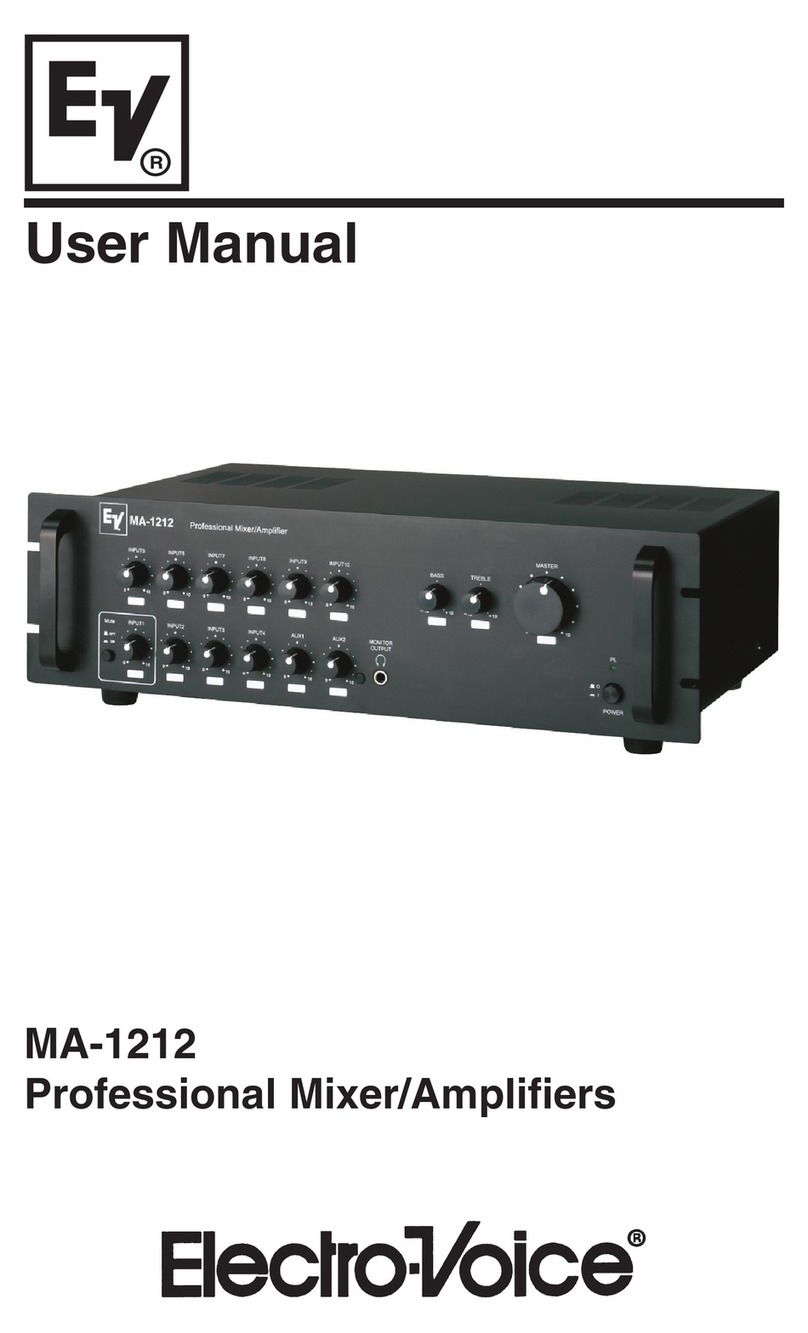
Electro-Voice
Electro-Voice Mixer Amplifier MA-1212 user manual
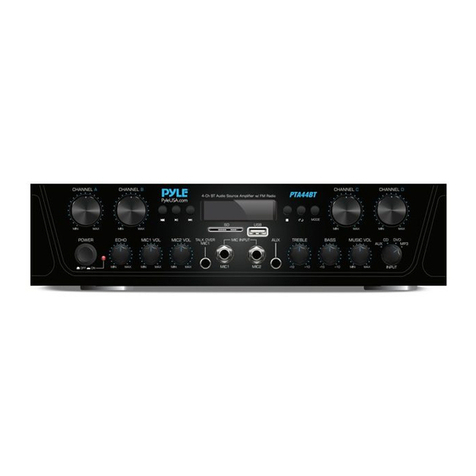
Pyle
Pyle PTA44BT user manual
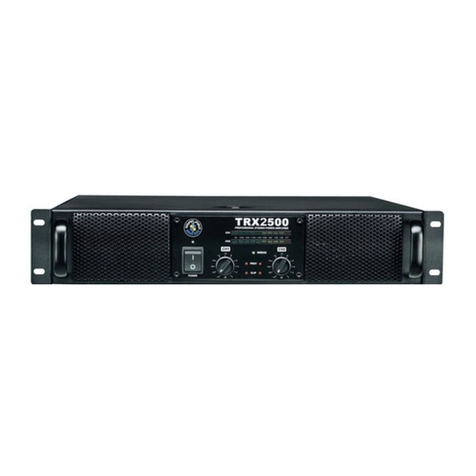
Topp Music Gear
Topp Music Gear TRX2500 owner's manual
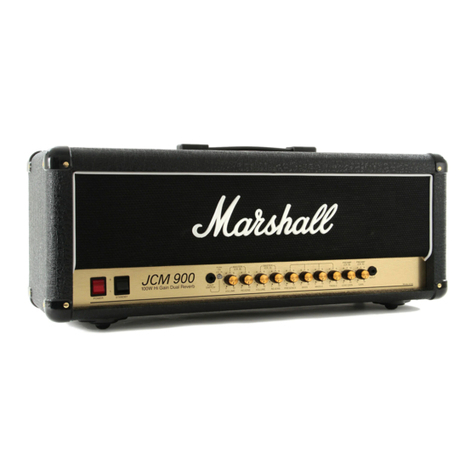
Marshall Amplification
Marshall Amplification JCM900 4100 quick start guide
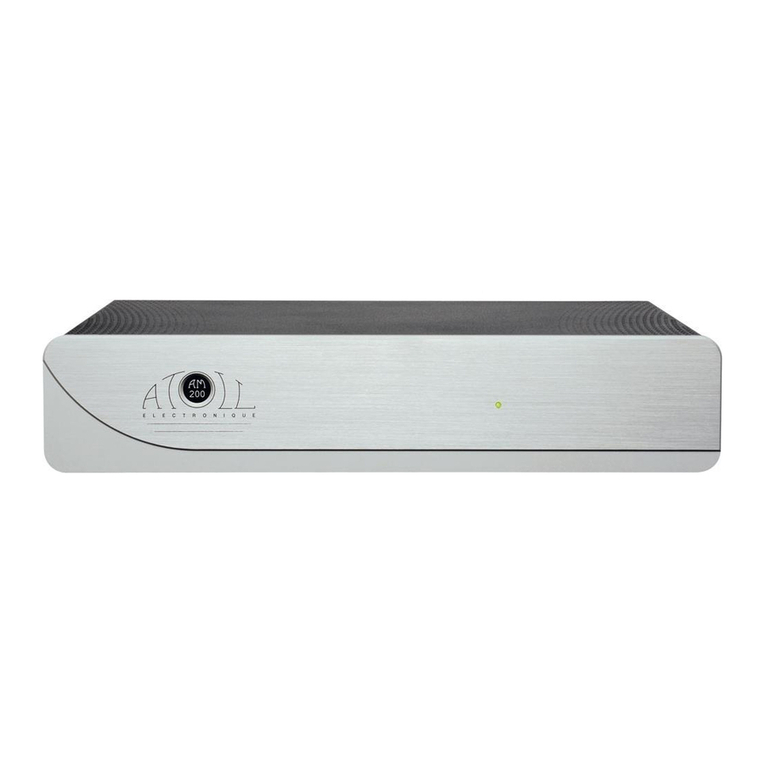
Atoll Electronique
Atoll Electronique AM200 Signature owner's manual
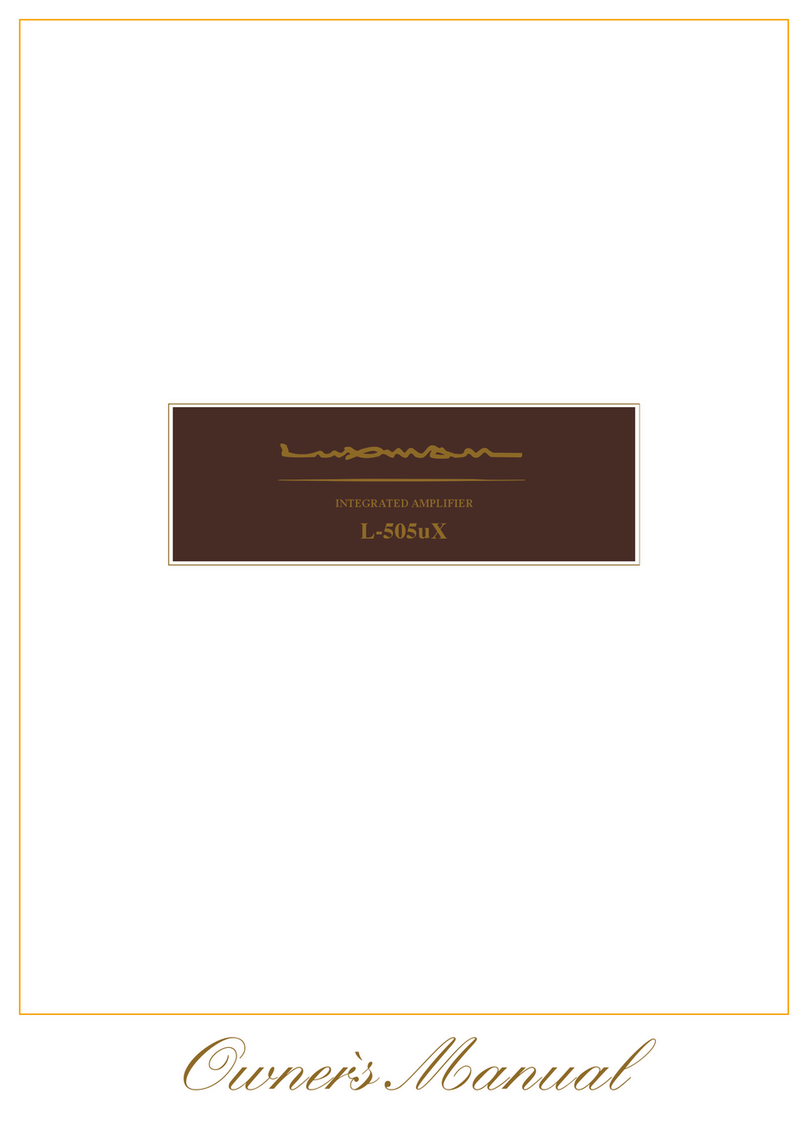
Luxman
Luxman L-505uX owner's manual
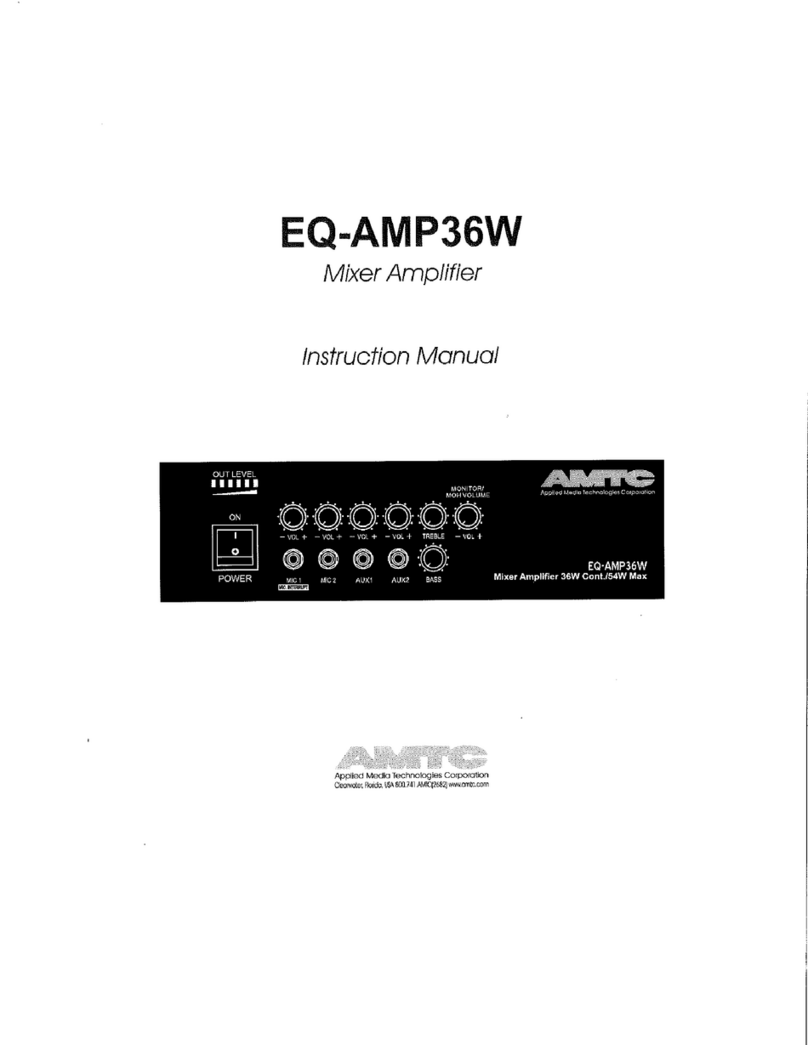
AMTC
AMTC EQ-AMP36W instruction manual
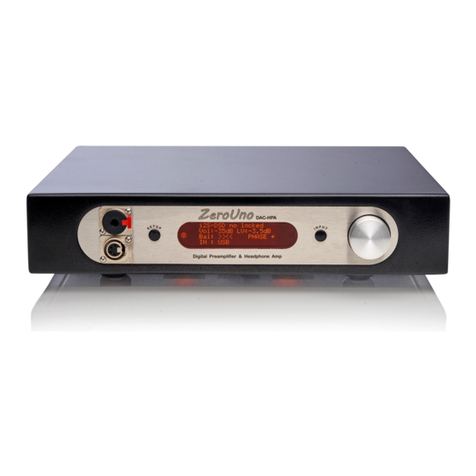
Canever
Canever ZeroUno DAC-HPA operating instructions
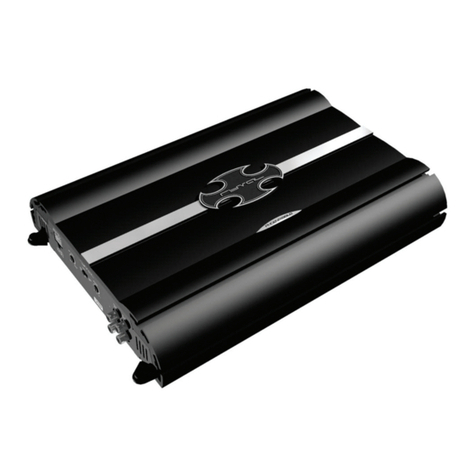
Phoenix Gold
Phoenix Gold Ryval V754 product manual
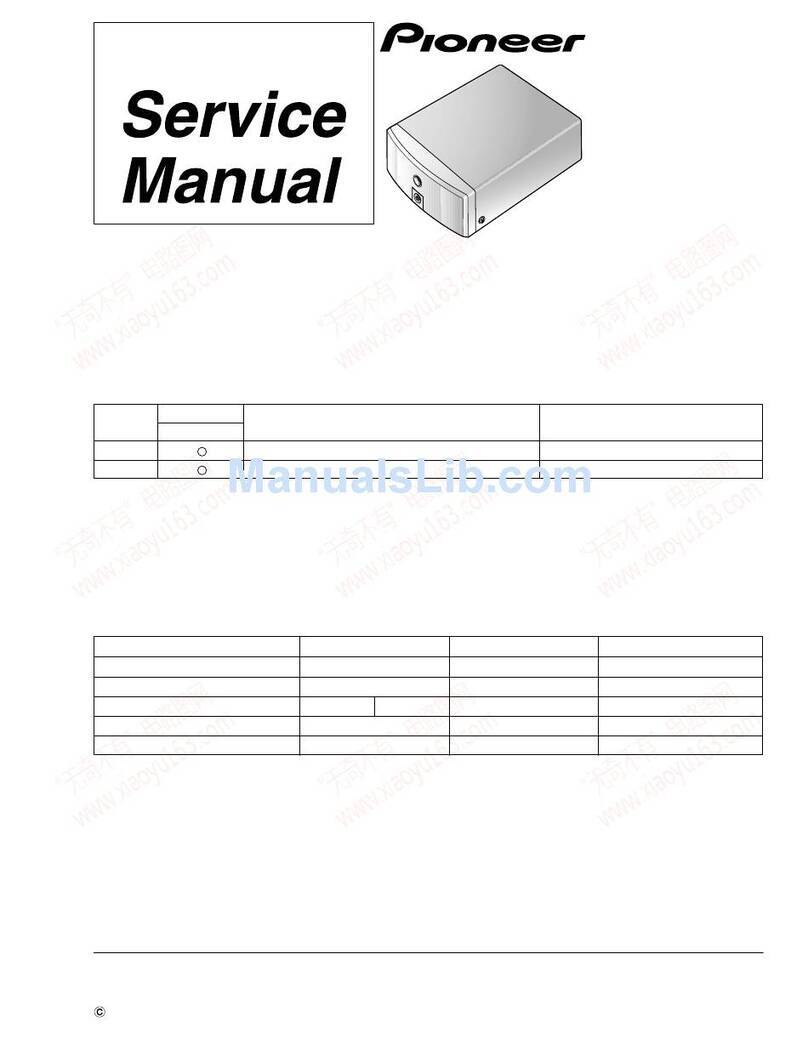
Pioneer
Pioneer M-L11 Service manual
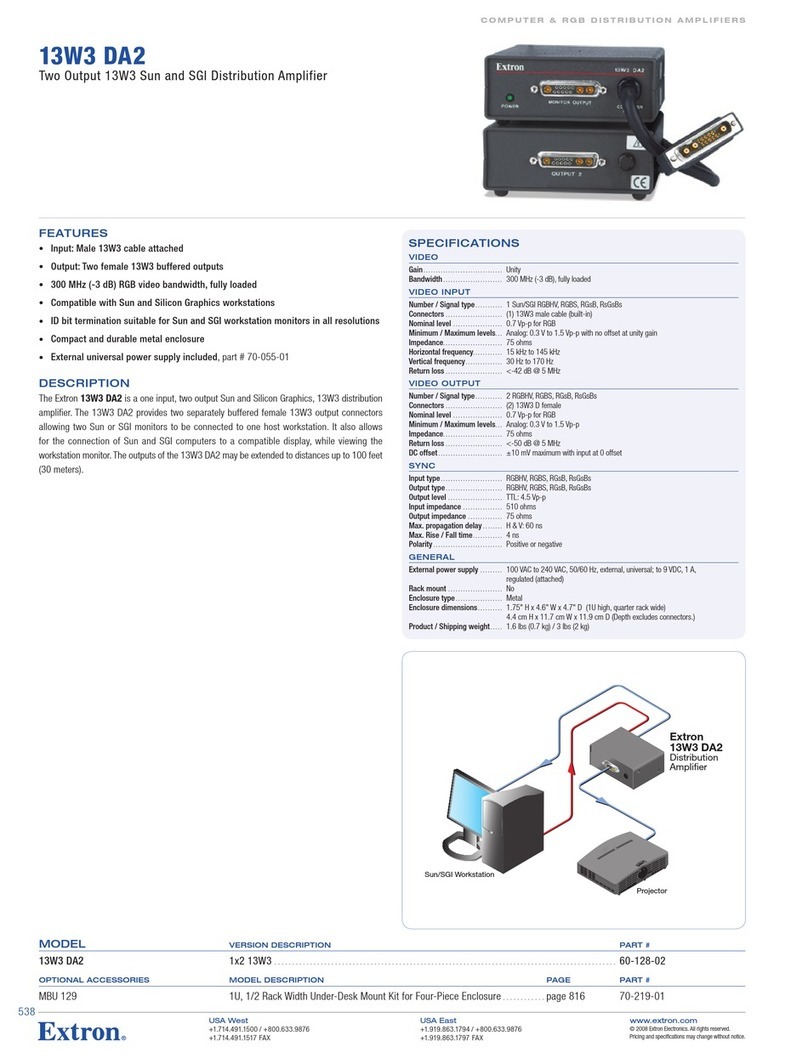
Extron electronics
Extron electronics Two Output 13W3 Sun and SGI Distribution Amplifier 13W3... Specifications
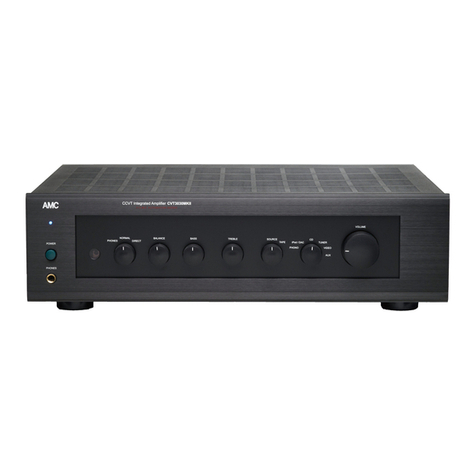
AMC
AMC CVT3030MKII Instructions for installation and operation
